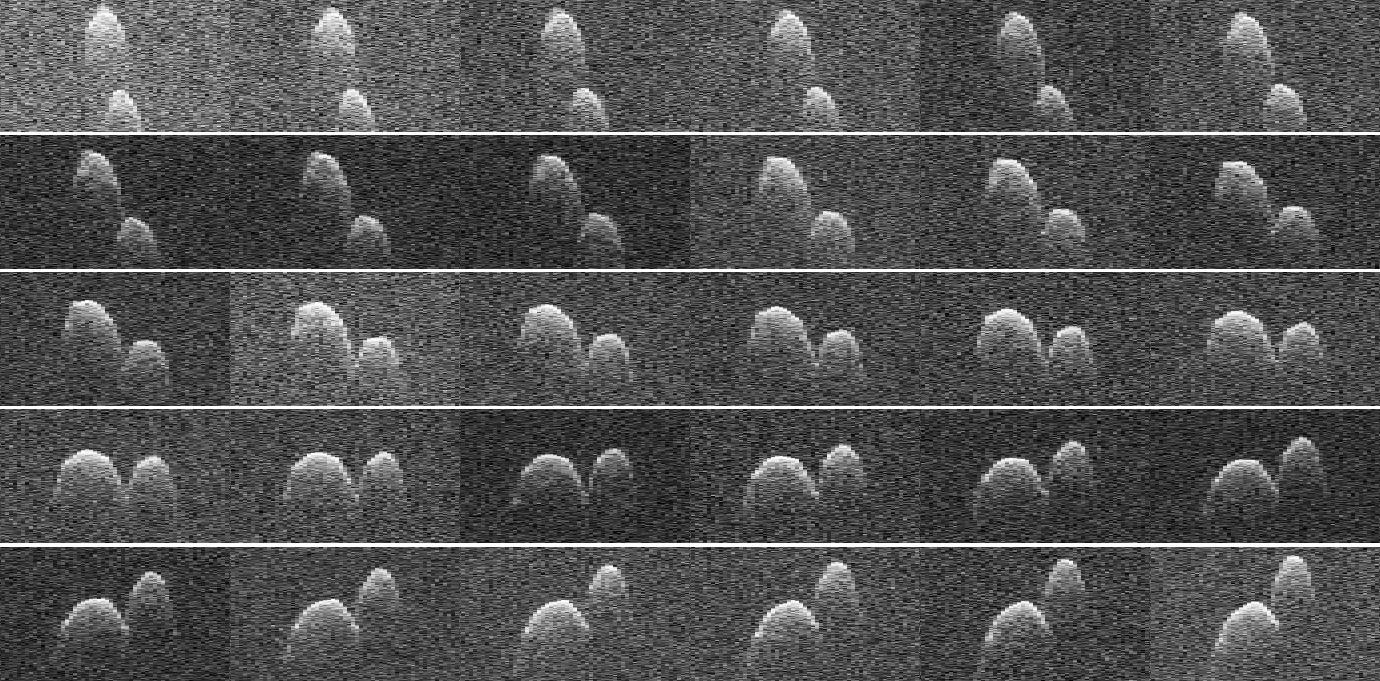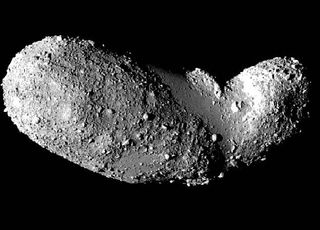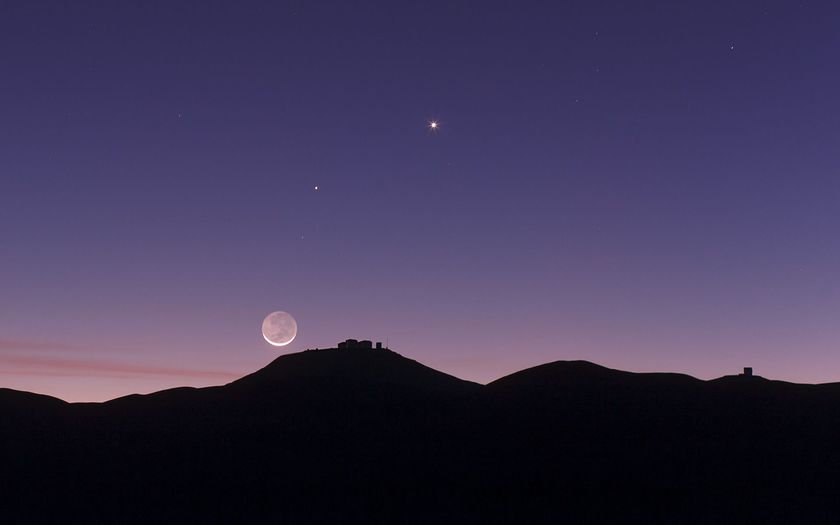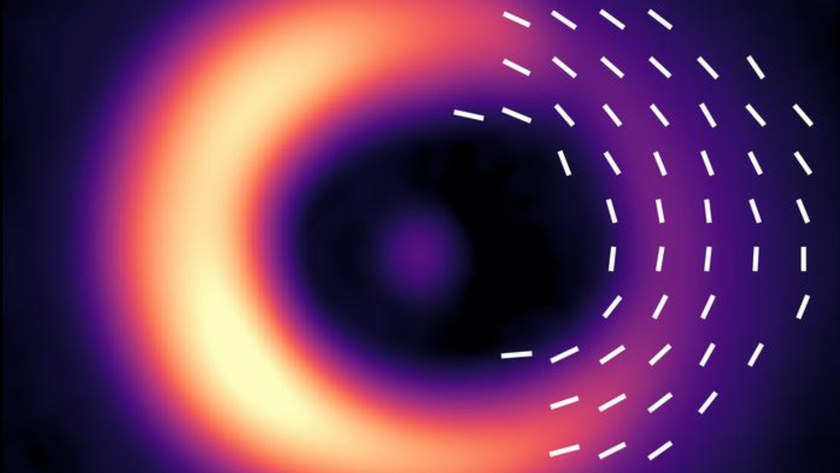Peanut-Shaped Asteroid Zooms Past Earth in Incredible Video

Two giant radio telescopes teamed up to image a peanut-shaped asteroid that zoomed by Earth late last month.
The resulting radar images, which researchers combined into an asteroid flyby video, show that the asteroid, known as 1999 JD6, is a "contact binary" consisting of two lobes joined together.
"Radar imaging has shown that about 15 percent of near-Earth asteroids larger than 600 feet [about 180 meters], including 1999 JD6, have this sort of lobed, peanut shape," Lance Benner, of NASA's Jet Propulsion Laboratory in Pasadena, California, who leads NASA's asteroid radar research program, said in a statement.
The asteroid 1999 JD6 flew within 4.5 million miles (7.2 million kilometers) of Earth — about 19 times the distance between our planet and the moon — in the early-morning hours of July 25. 1999 JD6 won't come that close to Earth again until 2054, NASA officials said.
That same day, scientists used NASA's 230-foot-wide (70 m) Deep Space Network antenna at the Goldstone Complex in California to bounce radar signals off the asteroid. Reflections from those signals were then received by the 330-foot (100 m) National Science Foundation Green Bank Telescope in West Virginia, NASA officials said.
This two-telescope strategy allowed the research team to observe features as small as 25 feet (7.5 m) wide on the asteroid.

"I'm interested in this particular asteroid because estimates of its size from previous observations, at infrared wavelengths, have not agreed," Sean Marshall, a graduate student at Cornell University who's studying 1999 JD6, said in the same statement. "The radar data will allow us to conclusively resolve the mystery of its size to better understand this interesting little world."
Get the Space.com Newsletter
Breaking space news, the latest updates on rocket launches, skywatching events and more!
Previous research had already shown that 1999 JD6 rotates once every 7.5 hours. The video compiled from the new radar images spans 7 hours and 40 minutes.
Follow Kasandra Brabaw on Twitter at @KassieBrabaw. Follow us @Spacedotcom, Facebook and Google+. Originally published on Space.com.
Join our Space Forums to keep talking space on the latest missions, night sky and more! And if you have a news tip, correction or comment, let us know at: community@space.com.

Kasandra Brabaw is a freelance science writer who covers space, health, and psychology. She's been writing for Space.com since 2014, covering NASA events, sci-fi entertainment, and space news. In addition to Space.com, Kasandra has written for Prevention, Women's Health, SELF, and other health publications. She has also worked with academics to edit books written for popular audiences.


